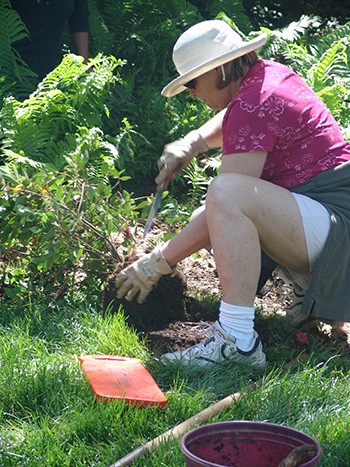by Melita Schmeckpeper (2017-2018 Education Intern)
Fall is an ideal time for planting. I asked Scott Arboretum Curator and Plant Recorder Mary Tipping for three of her favorite tried-and-true plant performers. Whether you’re looking for resilient hydrangeas, texture-rich perennials, or abundantly-flowering trees, her list was inspiring!
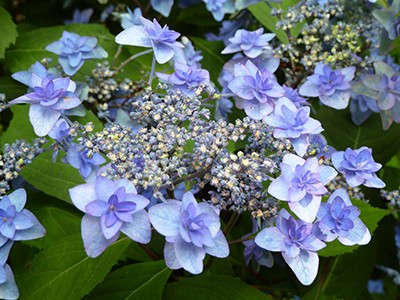
Resembling stars hovering around the smaller fertile flowers, the sterile flowers of Hydrangea serrata ‘Miyama-yae-murasaki’ are doubled with slightly pointed petals. photo credit: J. Coceano
Hydrangea serrata ‘Miyama-yae-murasaki’
If your Hydrangea macrophylla are suffering from winter damage, Mary Tipping recommends this lovely mountain hydrangea as a great substitute thanks to its good winter resistance and attractive purple flowers. Unlike H. macrophylla, this plant is able to bloom on both old and new growth, which means you’ll still see flowers even if the older branches are broken by winter weather.
This cultivar, commonly known as purple tiers mountain hydrangea, is beautiful in its own right. Resembling stars hovering around the smaller fertile flowers, the sterile flowers are doubled with slightly pointed petals. H. serrata ‘Miyama-yae-murasaki’ responds well to changes in soil pH, so you can shift the flower color slightly as desired, with colors ranging from pink to blue-violet. It blooms later in the summer than H. macrophylla, so if you’d like to enjoy both in your garden, you can expect a longer display of flowers.
H. serrata ‘Miyama-yae-murasaki’ is about 4 ft wide and high at maturity; its compact size relative to many hydrangeas makes it a good plant if you have space limitations. While it will tolerate sun, it is best-suited to partially-shaded locations, and does best in well-drained soils. Hardy from zones 6 to 9.
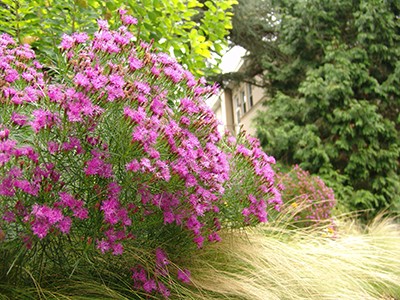
Vernonia lettermanii ‘Iron Butterfly’ bears an abundant quantity of striking purple-pink flowers in late summer. photo credit: R. Robert
Vernonia lettermannii ‘Iron Butterfly’
Commonly known as narrow-leaf ironweed, this Vernonia cultivar is notable for the delicacy of its unusual, needle-like foliage, reminiscent of Amsonia hubrichtii. However, unlike A. hubrichtii, this vigorous plant bears an abundant quantity of striking purple-pink flowers in late summer. As reflected by its cultivar name, it is a favorite of butterflies and other pollinators. Later in the season, this multi-faceted plant provides winter interest thanks to its strong texture and the contrast between its dark stems and fluffy cream-colored seed heads.
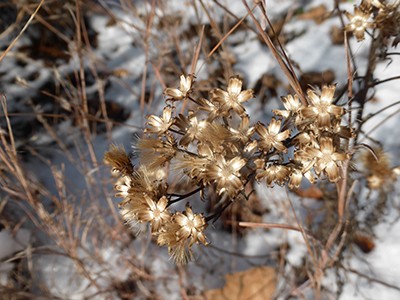
Later in the season, Vernonia lettermannii ‘Iron Butterfly’ provides winter interest thanks to its strong texture and the contrast between its dark stems and fluffy cream-colored seed heads. photo credit: R. Robert
Providing both texture and color to a garden, Vernonia lettermannii ‘Iron Butterfly’ is great in masses or as an accent, and shines in dry areas of pollinator gardens. It grows to 30-36 inches in height and width, and can be cut back by half in midsummer to further control height. It is best in full sun to partial shade. It is tolerant of a wide range of soil conditions, including dry, rocky sites, though it is important to ensure sufficient water during the first growing season until the plant establishes itself. Hardy from zones 4 to 9.
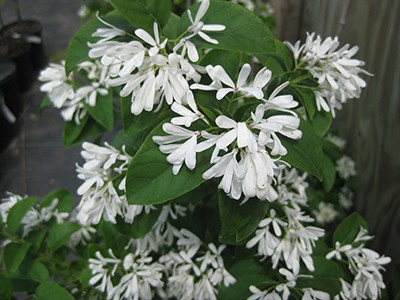
Chionanthus retusus ‘Tokyo Tower’ produces a cloud of fragrant white flowers in late spring. photo credit: Pleasant Run Nursery
Chionanthus retusus ‘Tokyo Tower’
Beautiful year-round and unique due to its columnar form, Chionanthus retusus ‘Tokyo Tower’ bears glossy, dark green leaves and produces a cloud of fragrant white flowers in late spring. This fringetree cultivar has tan and gold exfoliating bark, and is decorated late in the season by bright yellow fall color. Its blueberry-like fruits are a good food source for birds.
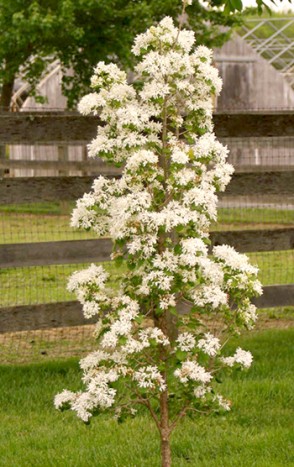
Beautiful year-round and unique due to its columnar form, Chionanthus retusus ‘Tokyo Tower’ bears glossy, dark green leaves. photo credit: Pleasant Run Nursery
This low-maintenance tree rarely requires pruning and does well in urban settings since it is tolerant of air pollution. It can be planted in full sun to part shade, but flowers best in full sun. It grows happily in well-drained soils with medium moisture levels. Reaching 12 to 15 feet tall and 4 to 6 feet wide at maturity, this cultivar works well in small spaces or as an accent in larger areas. Hardy from zones 6 to 9.
All these great garden plants can found at the Scott Arboretum Selections: Fall Sale on Saturday, September 16 and Sunday, September 17! Every two years, Scott Arboretum staff and volunteers draw on their experience growing and enjoying plants in this region to assemble a great selection of hard-to-find ferns, hydrangeas, edible ornamentals, perennials, and woodies that are ideal for use and planting in the fall. What are you planting this fall?

